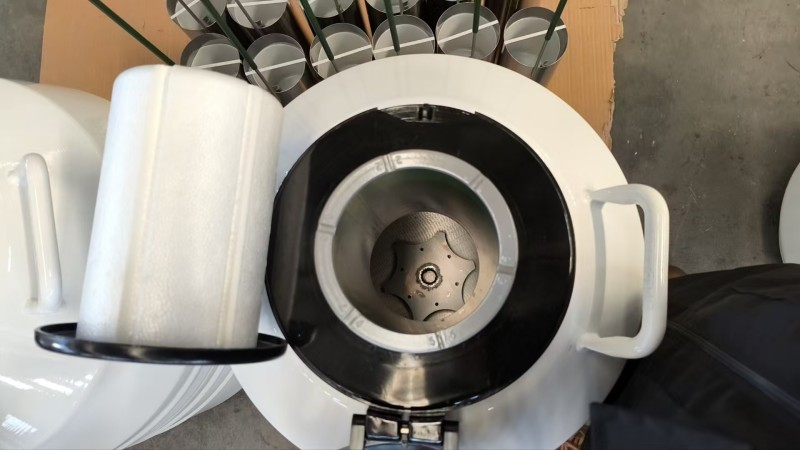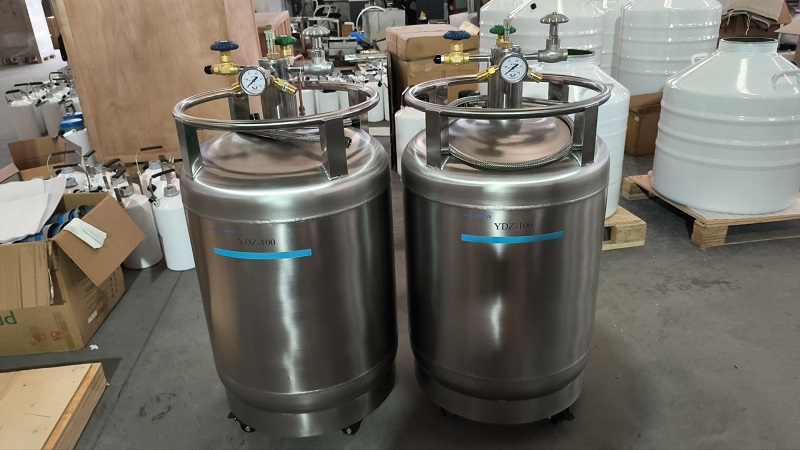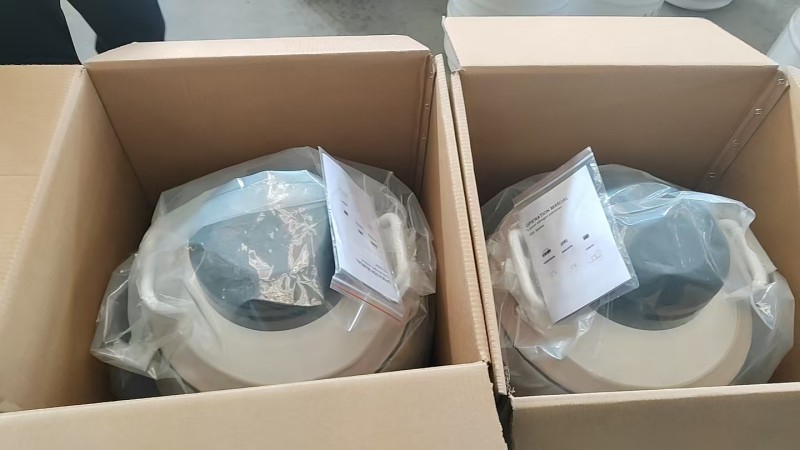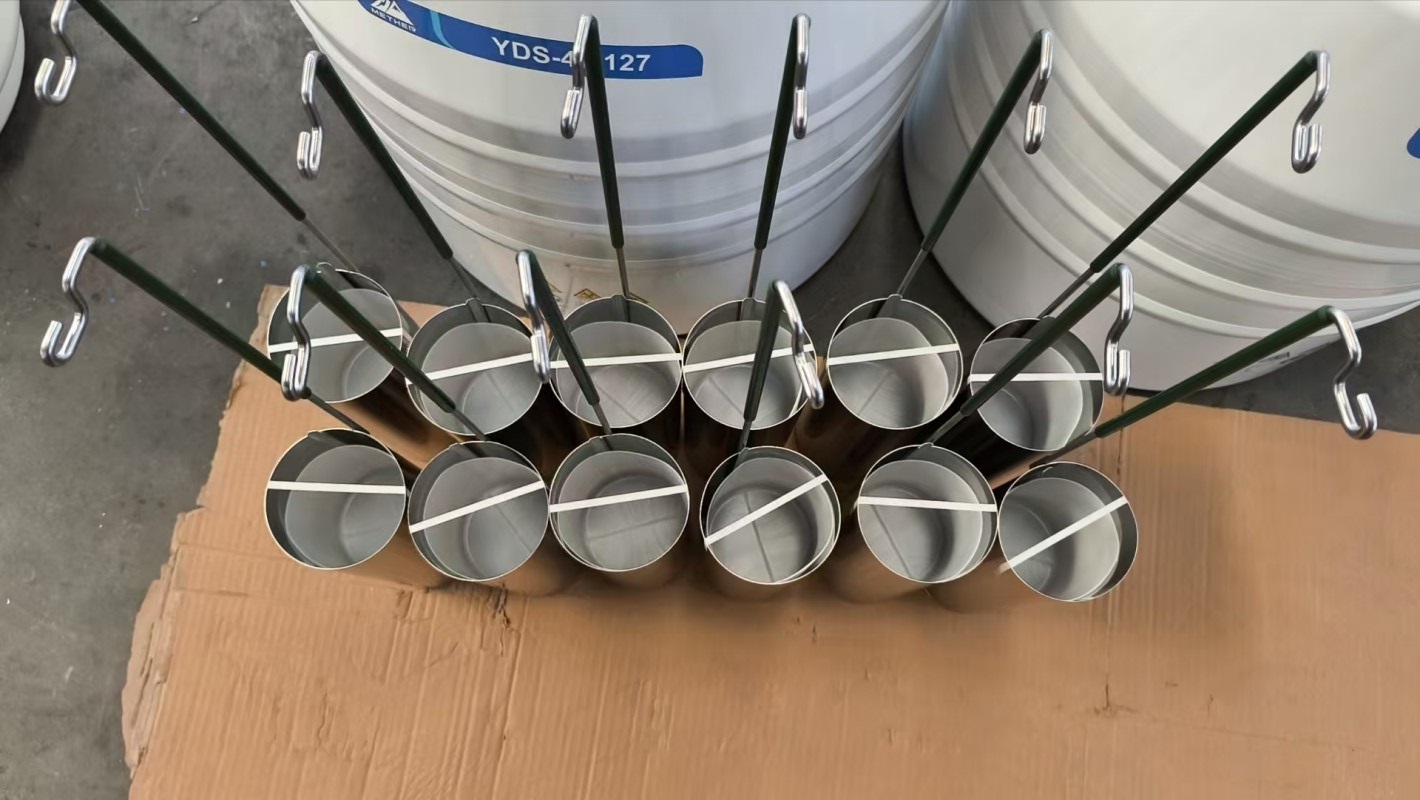If you’re searching for a reliable solution for low-temperature storage and transportation of liquid nitrogen (LN2, boiling point -196°C), a liquid nitrogen tank is the core equipment. Designed with advanced cryogenic insulation technology, it maintains ultra-low temperatures for extended periods, minimizes LN2 evaporation, and ensures safe operation—making it indispensable across industries like biomedicine, research, and manufacturing.
A liquid nitrogen tank (also called an LN2 tank or cryogenic storage tank) is a specialized insulated container engineered to store, transport, and dispense liquid nitrogen. Its primary goal is to retain the ultra-low temperature of LN2 (-196°C) while preventing excessive evaporation and ensuring user safety. Unlike ordinary containers, it uses a “vacuum insulation + multi-layer adiabatic material” structure to block heat transfer, making long-term low-temperature preservation possible.
Liquid nitrogen tanks are designed around two key priorities: cryogenic preservation and safety. Their main functions include:
- Ultra-Low Temperature Retention: Stabilizes internal temperatures at approximately -196°C using high-performance insulation, reducing LN2 evaporation loss (critical for long-term storage of samples or materials).
- Safe Transportation: Transport-type liquid nitrogen tanks feature shock-resistant shells, leak-proof valves, and secure latches to protect LN2 from spills during transit.
- Controlled Dispensing: Advanced models (e.g., self-pressurizing LN2 tanks) include pressure control systems and discharge ports, allowing precise LN2 distribution for industrial or laboratory use.
- Sample Protection: Equipped with internal baskets or canisters to safely store items like biological samples, cell cultures, or industrial parts, avoiding direct contact with LN2.
Choosing the right type depends on your use case—storage, transportation, or industrial supply. Below is a breakdown of common categories:
Its cryogenic insulation performance relies on a multi-layer structure to block three main heat transfer paths (conduction, convection, radiation):
- Inner Tank: Made of corrosion-resistant stainless steel, it directly holds LN2 and resists ultra-low temperature brittleness.
- Vacuum Interlayer: A vacuum space between the inner and outer tanks eliminates heat transfer via air convection and conduction.
- Adiabatic Material: The vacuum interlayer is filled with multi-layered insulating materials (e.g., glass fiber, aluminum foil) to reduce radiant heat absorption.
- Neck Plug: A heat-insulating plug (usually polyurethane) seals the tank opening, preventing warm air from entering while allowing small amounts of evaporated nitrogen to escape (balances internal pressure).
- Baskets/Canisters: Removable stainless steel containers inside the inner tank, used to organize and retrieve samples without exposing hands to LN2.
Liquid nitrogen tanks serve diverse industries due to their ability to maintain -196°C temperatures. Common uses include:
- Biomedical & Healthcare: Storing blood products, stem cells, embryos, and vaccines in hospitals, fertility clinics, and biobanks. Critical for preserving biological activity.
- Scientific Research: Supporting cryogenic experiments (e.g., superconductivity tests, low-temperature chemistry) in physics, biology, and materials science labs.
- Industrial Processing: Enhancing metal hardness via cryogenic treatment (e.g., tool steel, automotive parts); testing electronic components under ultra-low temperatures.
- Food Industry: Rapid freezing of food (e.g., liquid nitrogen ice cream, frozen seafood) to lock in freshness; freeze-drying for long-term food preservation.
- Other Uses: Cooling superconducting magnets (e.g., MRI machines), cryogenic welding, 文物修复 (cultural relic restoration), and LN2-based refrigeration systems.
LN2’s ultra-low temperature (-196°C) and colorless, odorless evaporated nitrogen pose risks (frostbite, asphyxiation). Follow these safety rules:
- Wear Cryogenic PPE: Always use insulated gloves, safety goggles, and a face shield to avoid skin/eye contact with LN2 (can cause instant frostbite).
- Ensure Ventilation: Use the tank in well-ventilated areas. Evaporated nitrogen displaces oxygen—high concentrations can lead to suffocation.
- Monitor LN2 Levels: Check liquid levels regularly (via level gauges or weighing). Refill LN2 before it runs out to prevent sample damage or pressure drops.
- Avoid Misuse: Do not put non-cryogenic items (e.g., plastic bottles, glass) into the tank (they may crack). Never drop or tip the tank (risk of inner tank damage and LN2 leakage).
Select a tank based on your specific needs by evaluating these key parameters:
- Capacity: Ranges from 10L to 200L. Choose 10-30L for small labs, 50-100L for industrial use, and 100+L for large-scale storage.
- Static Evaporation Rate: Measures daily LN2 loss (L/day). Lower rates mean better insulation (e.g., 0.5-1.0 L/day for high-quality storage tanks).
- Tank Opening Size: Small openings (50-80mm) reduce evaporation (ideal for long-term storage); large openings (100-150mm) facilitate frequent sample access.
- Certifications: Ensure compliance with international standards (e.g., ISO, ASME) or regional norms (e.g., GB/T 5458 in China) for material safety and leak resistance.
- Portability: For transportation needs, choose tanks with built-in handles, wheels, and anti-shock buffers.
Whether you need a liquid nitrogen storage tank for lab samples or a portable liquid nitrogen tank for on-site industrial use, understanding its types, functions, and safety rules is critical to maximizing performance and avoiding risks. For tailored recommendations, consult cryogenic equipment suppliers with proven expertise in your industry.



